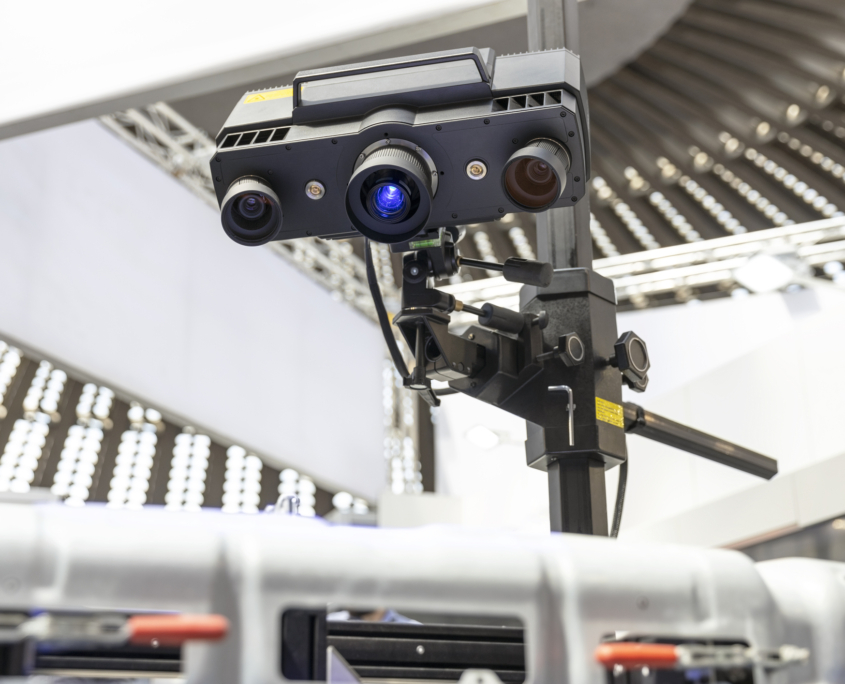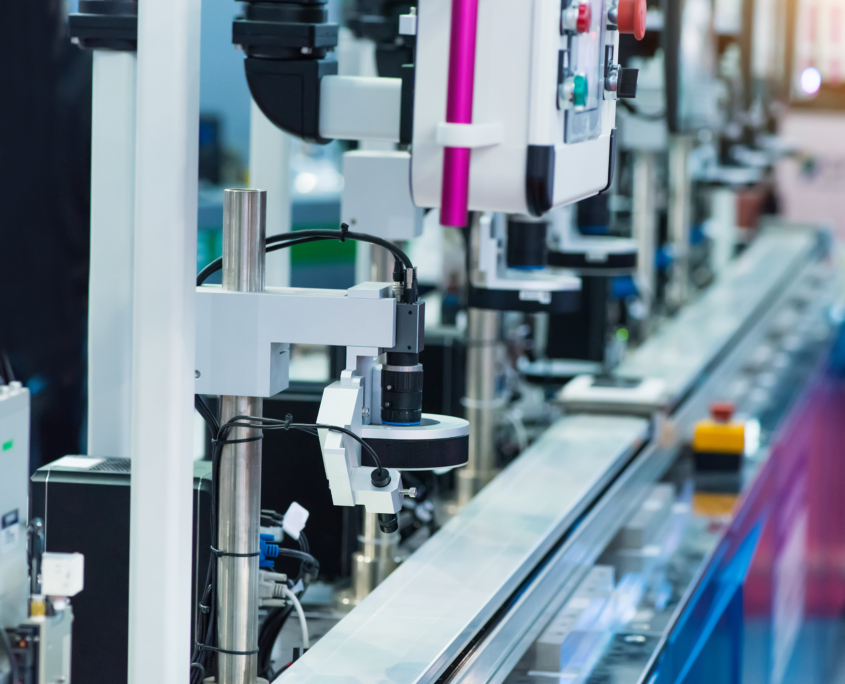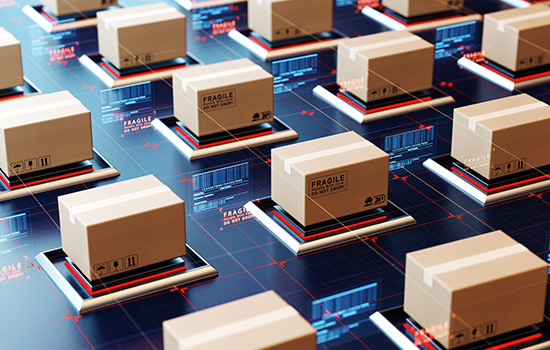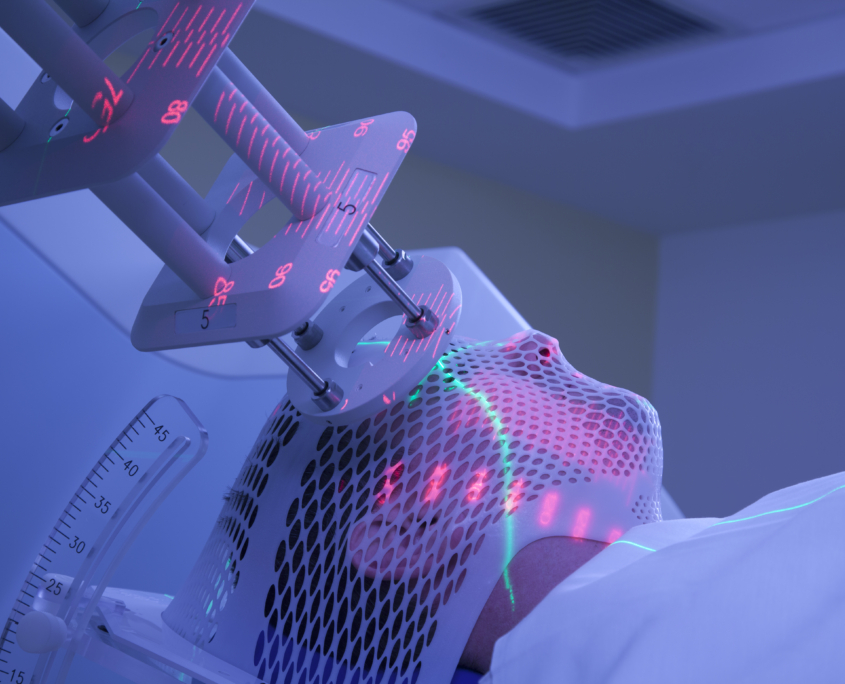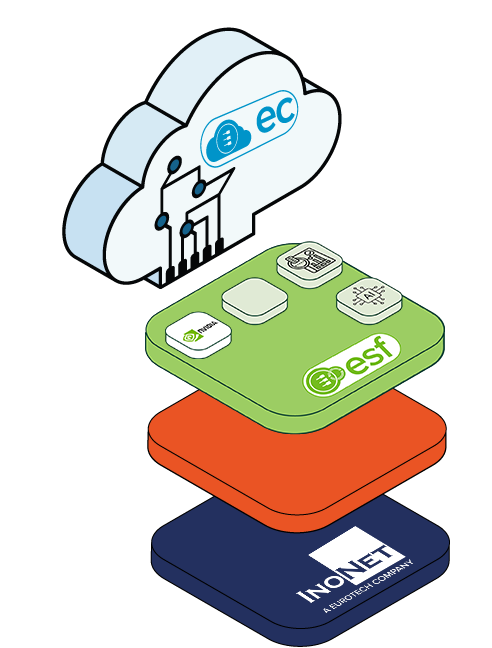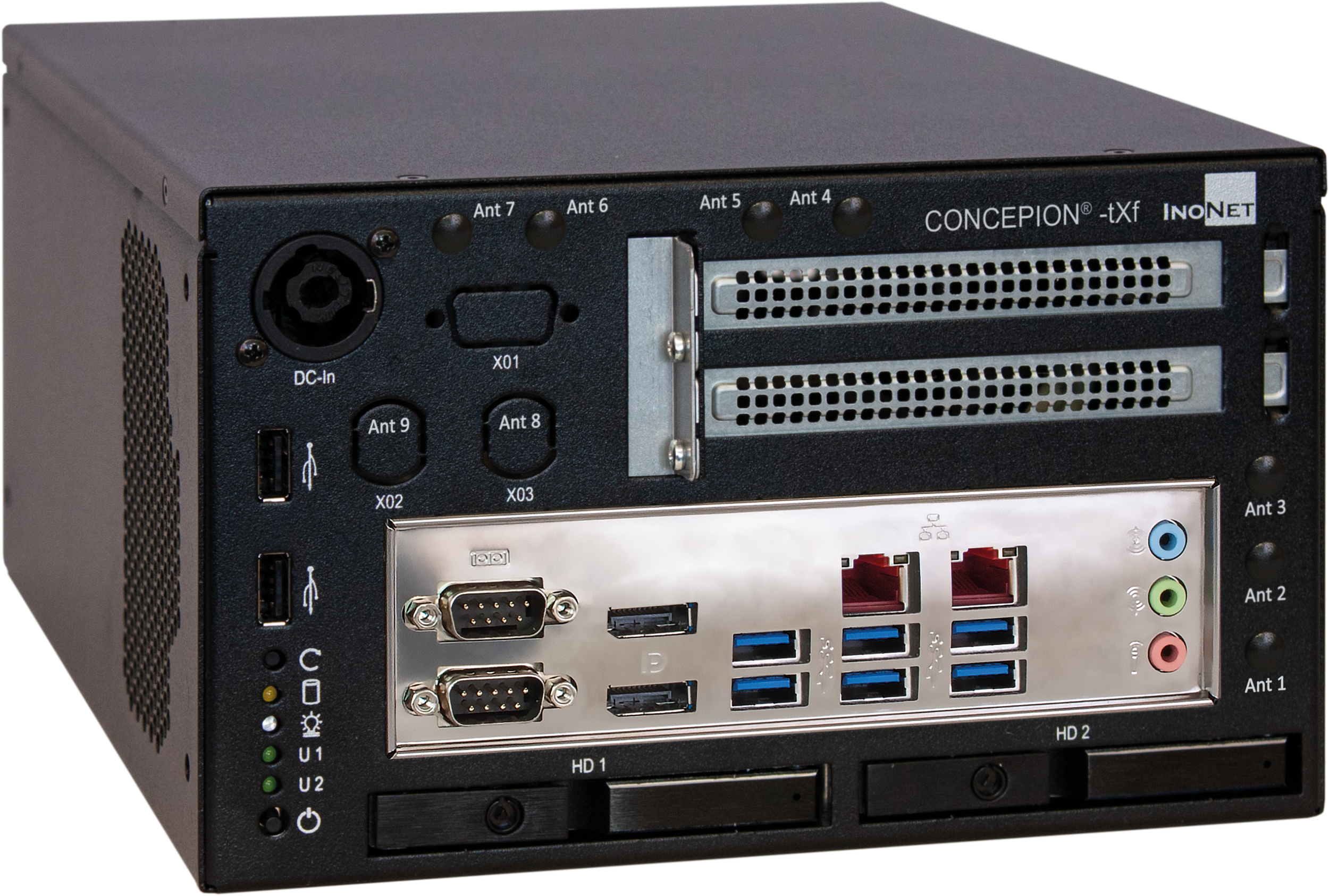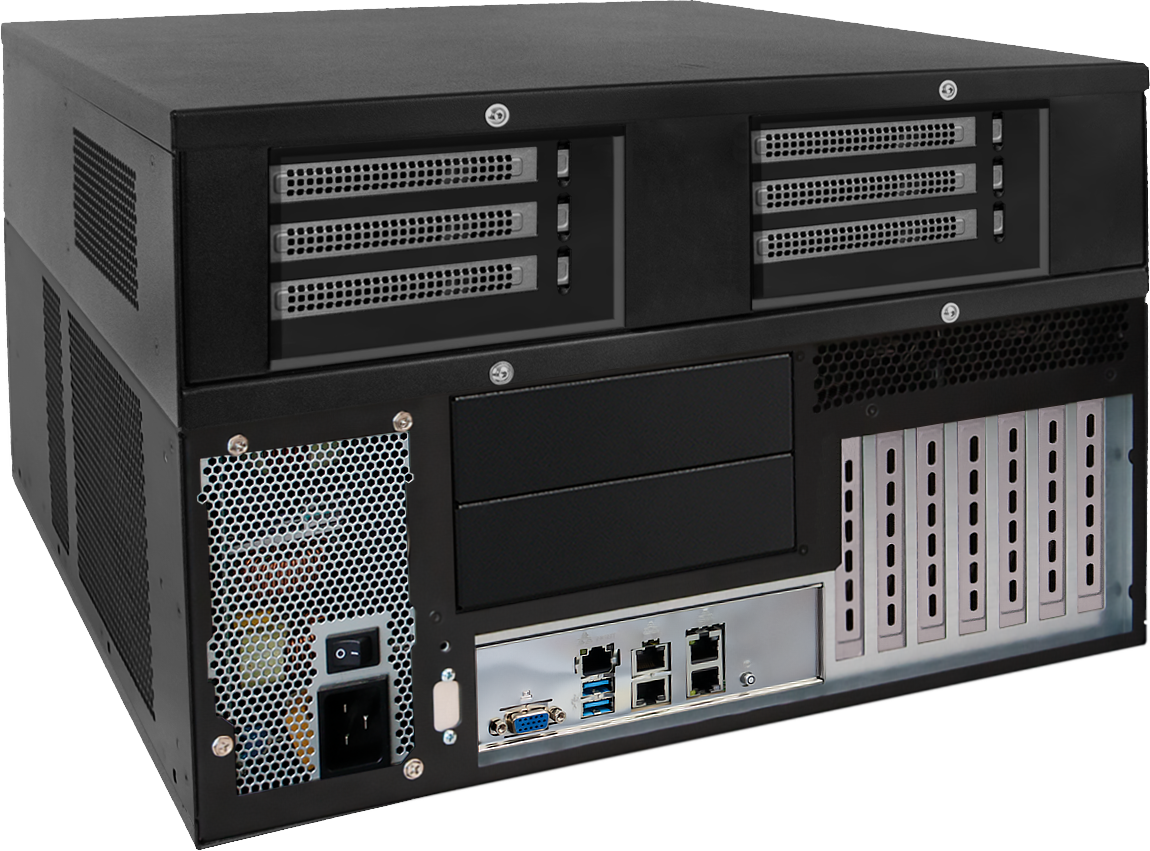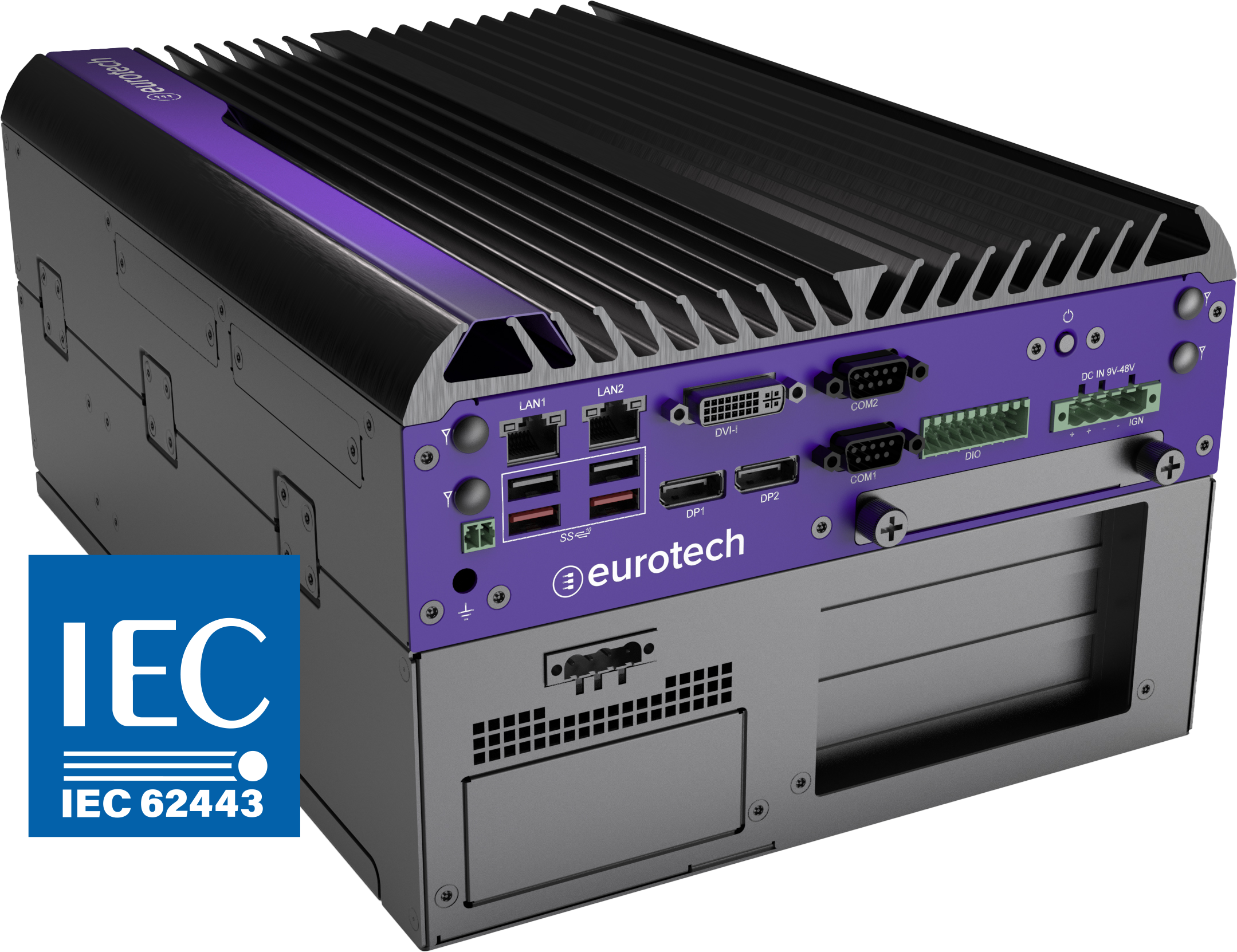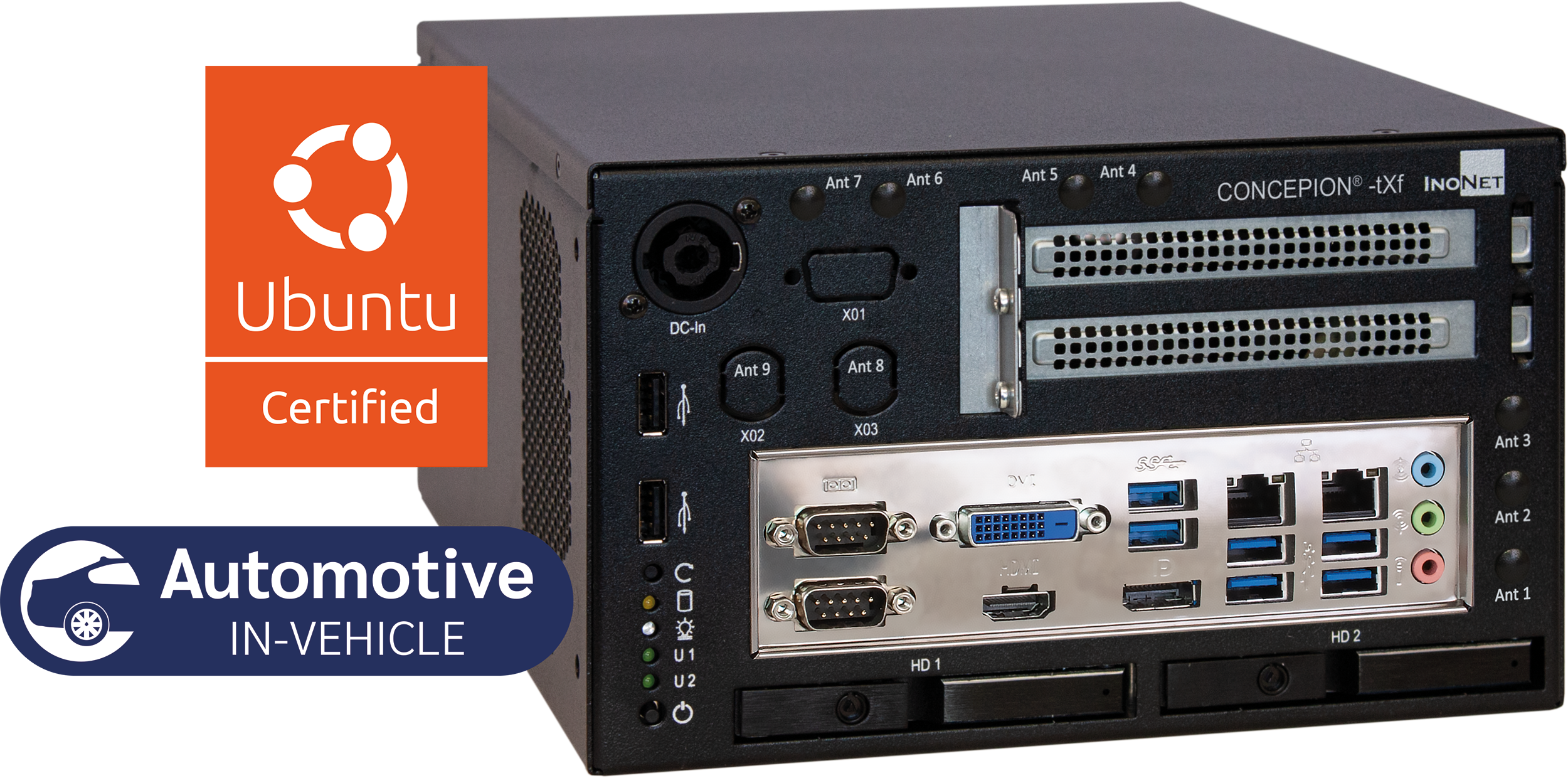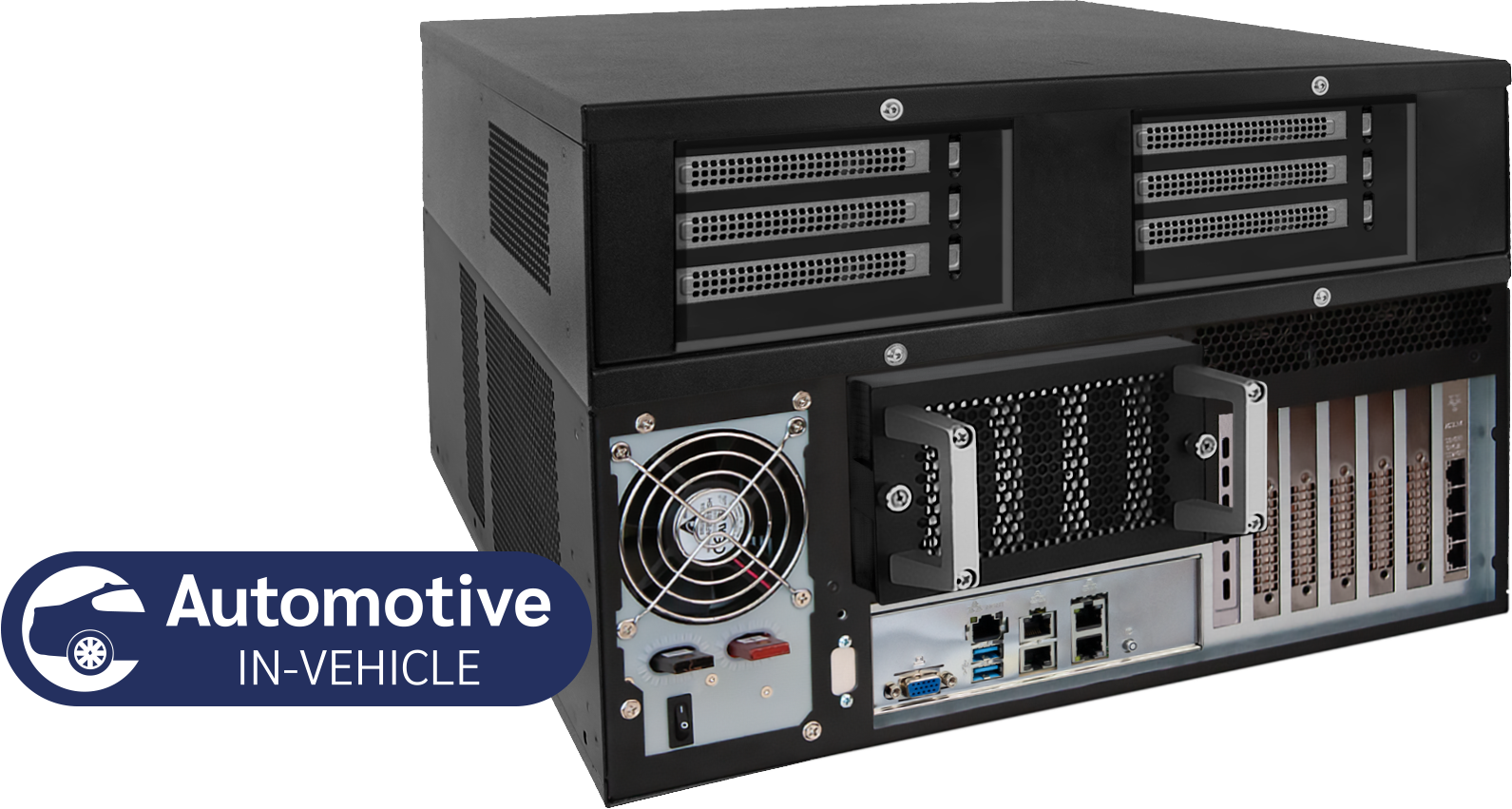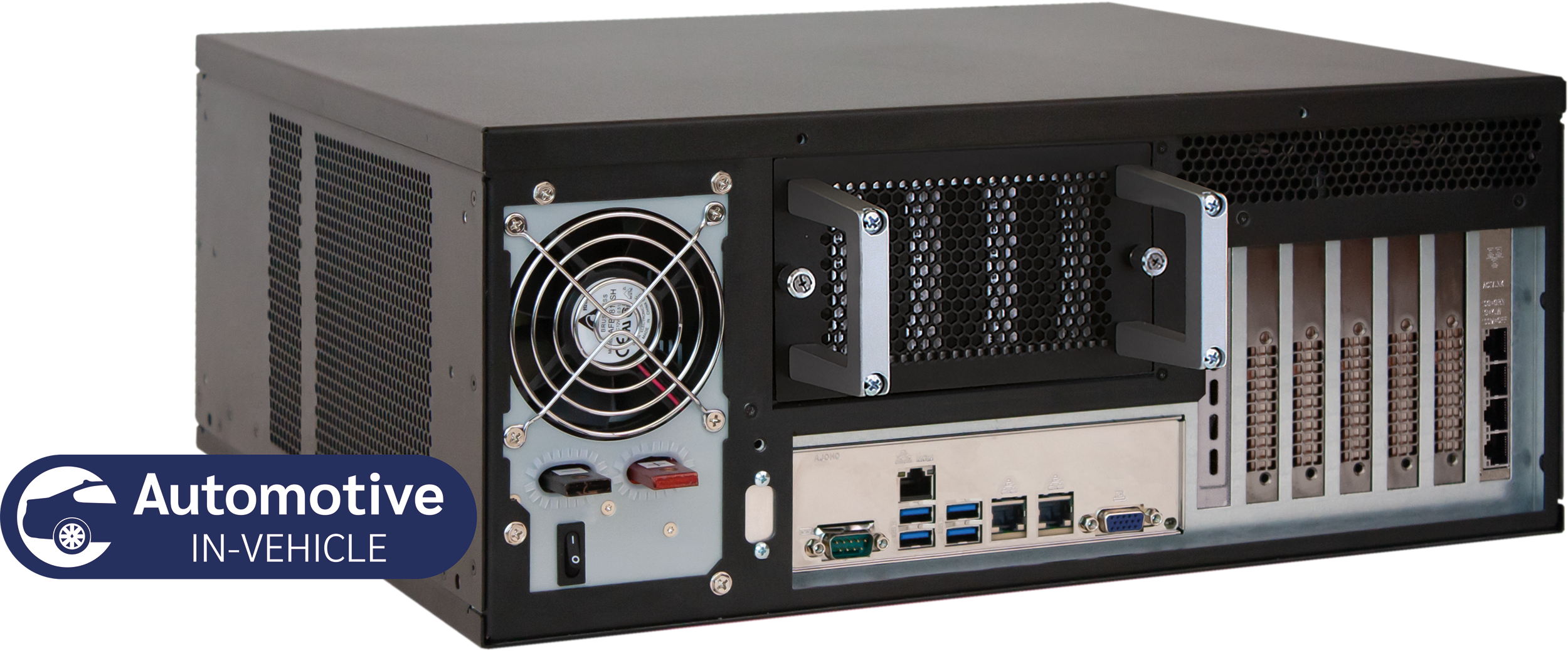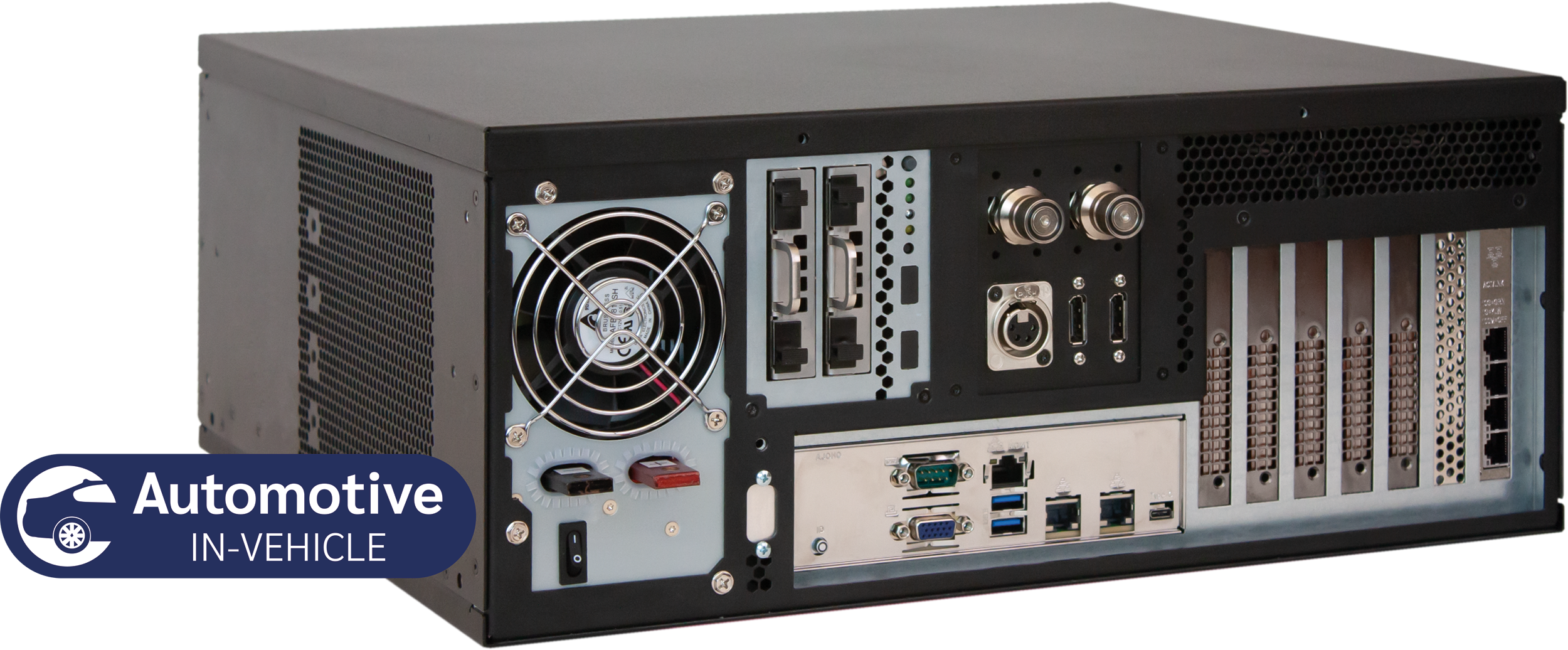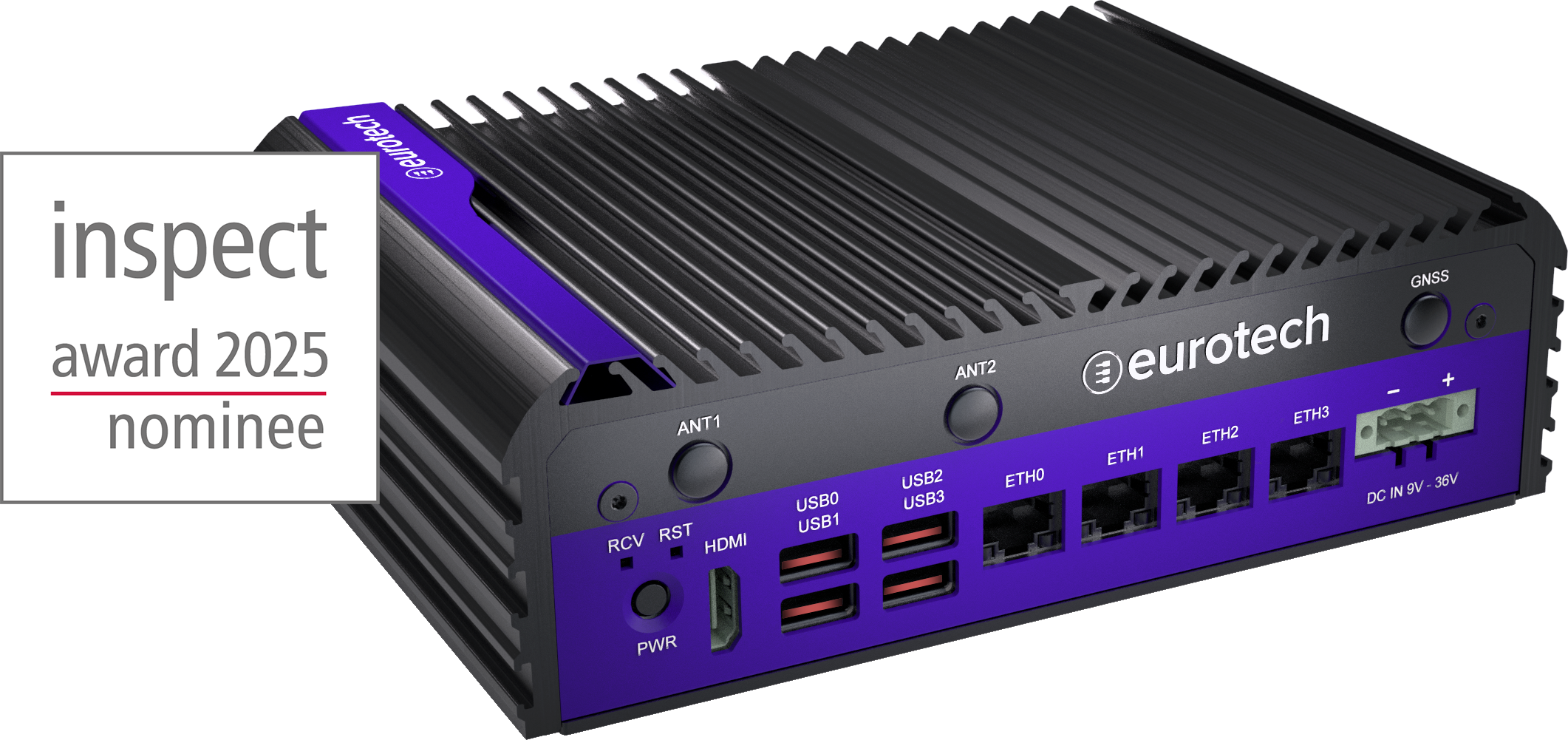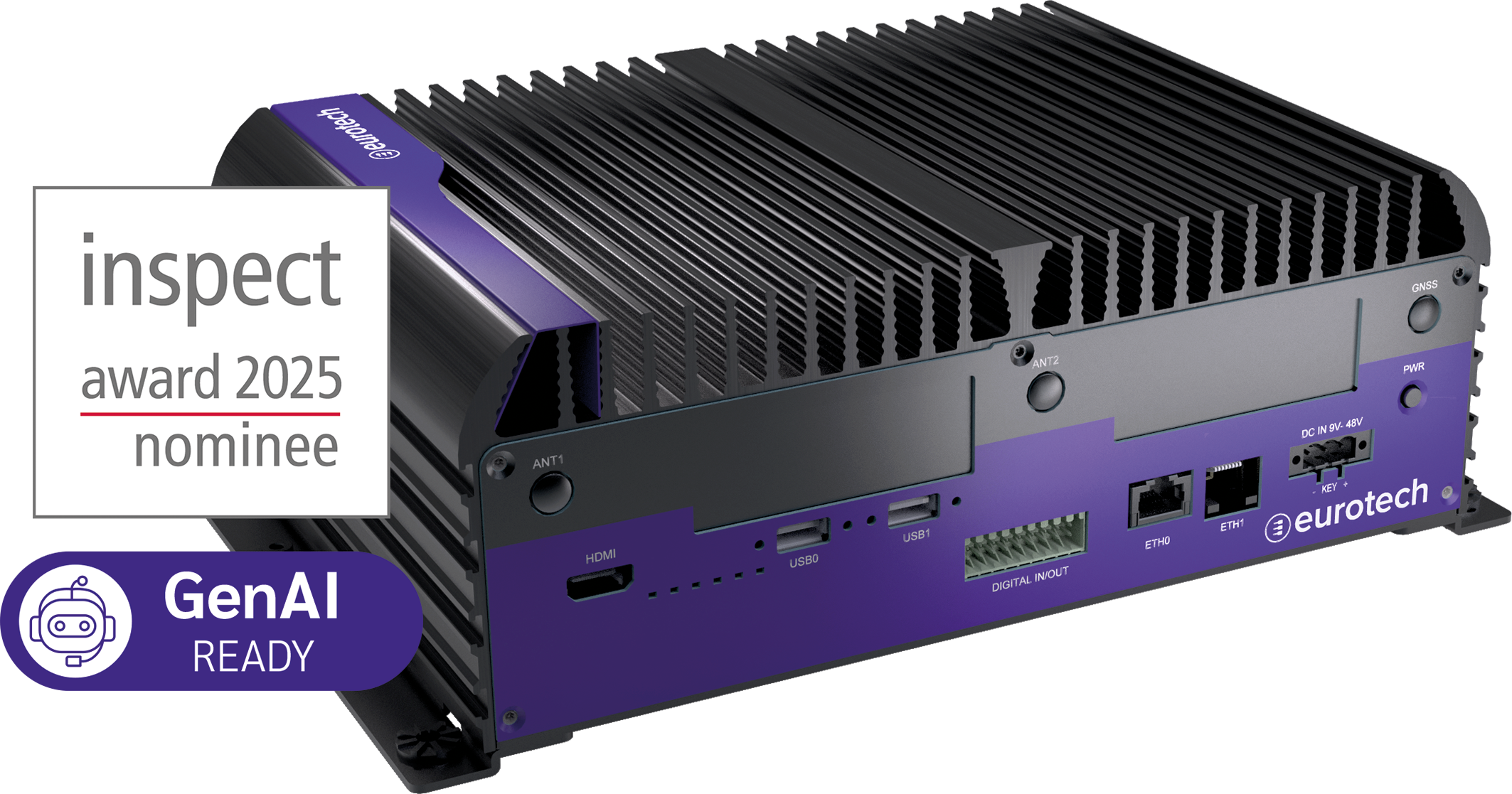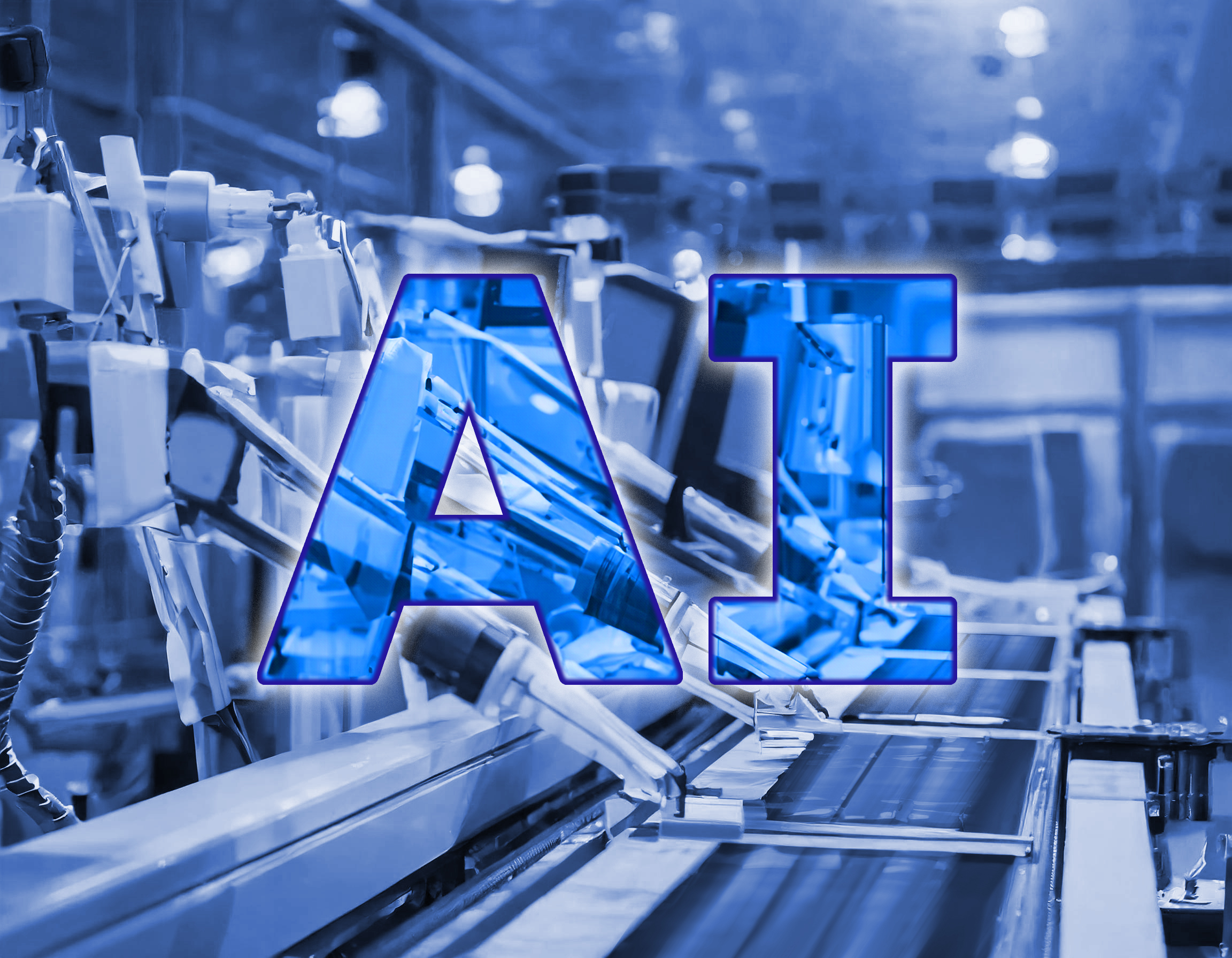- InoNet Computer GmbH
Wettersteinstraße 18
82024 Taufkirchen
Computer Vision & Artificial intelligence
Computer vision is a key element of industrial image and video processing, which is setting new standards through the use of artificial intelligence (AI) in industrial computers. With the help of advanced algorithms and powerful hardware, computers can understand and analyse visual information such as images and videos. Machines (machine vision) can use visual recognition to identify faults or defects in real time and initiate corrective measures. The integration of frame grabbers into industrial PCs further enhances the performance and functionality of computer vision applications in industrial environments.
Computer vision applications
The use of computer vision is opening up a wide range of opportunities in sectors from manufacturing to medical technology. In the manufacturing industry, computer vision enables real-time quality defect detection and process automation. This leads to more efficient production with less faulty products. The use of GPU Vision PCs also increases efficiency and improves quality in robotics, security monitoring, logistics and warehouse management.
Start your AI application in just a few steps
1. Choose a built-in secure platform tailored to your needs
Choose the hardware platform that best suits your environment and applications.
ReliaCOR 44-11 is a “designed to be secure” edge AI platform that provides the highest level of data security and integrity by meeting the stringent security standards of ISA Secure IEC 62443-4-2. As a high-performance NVIDIA® certified device, it is ideal for implementing and running multiple AI models. With a powerful Intel® Core™ i7 CPU and an NVIDIA® A2 GPU, it delivers high computing performance and AI acceleration. In addition to supporting a variety of connectivity standards such as WI-FI, Bluetooth, GNSS and LTE, the platform also offers TPM 2.0 support and options for fieldbuses such as CAN and CAN-FD for industrial applications.
For more configurable hardware that can be tailored to your application, click here.
2. Minimise integration and compatibility risks
Using Ubuntu certified hardware minimises implementation risk, accelerates time to market and reduces development and support costs. Canonical’s testing ensures long-term compatibility with Linux by validating both the image and the hardware through regression testing. This thorough process checks and verifies individual components and features of the operating system, minimising integration risks through long-term compatibility and security updates.
1
2
3
4
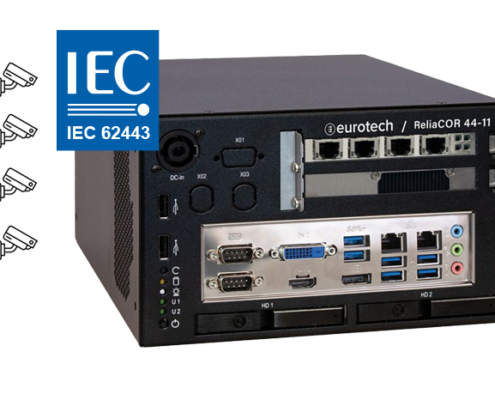
1
IEC 62443-4-1/-4-2 SL2 and ANSI/ISA 62443-4-1/-4-2 SL2-certified edge platform for secure access to unsecure PLCs.
2
Device management system that enables over-the-air updates, remote control, logging and status monitoring.
3
Compatibility with over 60 different non-IP protocols, including sophisticated computer vision.
4
Intuitive user experience through NVIDIA Triton, which simplifies the management and orchestration of AI models.
3. Configuration, not programming
Experience the simplicity of deploying, operating and orchestrating AI projects through a combination of intuitive operation, remote device management and OT security. Rely on a low-code/no-code platform for rapid development and ease of use. This allows you to run, continuously monitor, manage and update multiple AI models on one device. Loading and testing multiple models in parallel dramatically reduces development time. It is based on NVIDIA® Triton, a software stack designed specifically for deploying and scaling AI models in industrial environments. To increase the security of the AI models, the inference models are encrypted on the hard drive with unique identity certificates, offering a comprehensive range of configurable security options. Experience peace of mind with a fully secure, certified stack from hardware to software framework to AI application that ensures data integrity and protection.
4. Scale globally and stay flexible
With Everyware Cloud (EC) you can scale globally while remaining flexible. Benefit from remote monitoring, over-the-air updates and secure remote device management.
Overcoming implementation challenges
Deploying artificial intelligence close to the data source (edge, e.g. on the shop floor) poses several challenges. Firstly, the hardware platform used must be configured for the application and be able to withstand the harsh environmental conditions, as well as providing the necessary processing power for fast processing of the camera data and the required communication interfaces. In addition, implementation risks such as cybersecurity due to the valuable data and long-term compatibility & updates play a major role. However, the biggest challenge engineers face in their day-to-day work is the complexity of managing AI models and the long development and implementation times involved. According to Gartner, only 53% of AI projects go into production, and a pilot project takes an average of 7.3 months from pilot to production. Due to the long implementation time, companies lose speed compared to their competitors.
Interview with Marco Carrer: AOI Demo with ReliaCOR 44-11
Find out how our powerful platform seamlessly integrates your AOI and IoT applications in an interview with Marco Carrer, CTO of Eurotech. With IEC 62443-4-2 cybersecurity certification and Ubuntu certification, we ensure maximum security for your systems. At Embedded World 2024, our demo impressively showed how our system supports an AOI system and reliably rejects faulty PCBs. This system received the “Best in Show” award in the category of Artificial Intelligence at Embedded World 2024 for its outstanding performance.
Looking for a vision computer? Here is an overview of our industrial computers for image processing:
AI Vision Computer
FAQ – Computer Vision
What is NVIDIA® Triton used for?
NVIDIA® Triton is a software framework designed specifically for deploying and scaling AI models in production environments. It plays a crucial role in the implementation of AI-based applications, including computer vision in industrial environments.
For computer vision and industrial applications, NVIDIA® Triton enables the seamless integration of AI models into image processing and analysis processes. It facilitates the development and deployment of AI-based computer vision applications in industrial environments, helping to improve the performance and efficiency of such systems.
The role of NVIDIA® Triton can be categorised as follows:
- Inference Optimisation: NVIDIA® Triton provides tools and capabilities to optimise the inference (prediction) of AI models. This includes support for acceleration technologies such as GPU computing to increase inference speed and improve scalability.
- Model Management: Triton provides model management capabilities, including the ability to manage multiple models, track versions and dynamically update models without disrupting operations. This is particularly important in dynamic environments where AI models need to be updated frequently.
- Scalability and parallelisation: NVIDIA® Triton efficiently scales AI models across distributed systems to meet the demands of processing real-time data at scale. This enables efficient use of resources and high throughput.
- Multiple framework support: Triton supports a variety of deep learning frameworks including TensorFlow, PyTorch and ONNX, allowing flexibility in the selection and development of AI models.
- Consistent deployment: With Triton, AI models can be deployed consistently and run in multiple environments, including on-premises data centres, edge devices and cloud infrastructures.
What is TPM 2.0?
TPM 2.0 stands for Trusted Platform Module and is a security chip that provides hardware-level security functions such as key management, platform integrity, secure boot, encryption and authentication. It protects against cyberattacks and is used in IPCs, servers, embedded systems and IoT devices.
What are frame grabbers?
A frame grabber is a hardware component that captures digital images or video frames from external source devices and converts them into digital image data.
What is IEC 62443?
IEC 62443 is a comprehensive security framework focused on securing industrial automation and control system (IACS), making it a crucial benchmark for organizations aiming to enhance their cybersecurity posture. Developed by the International Electrotechnical Commission (IEC), it defines requirements, guidelines and procedures for protecting industrial assets against cyber threats. The IEC 62443 series of standards consists of several parts covering different aspects of cyber security for industrial automation systems. They are particularly important as cyber threats increasingly pose a risk to critical infrastructure and industrial processes. Adherence to these standards will help improve the resilience of industrial assets to cyber-attacks and minimise potential risks. It is therefore aimed at Industry 4.0 operators, system integrators and product manufacturers and their compliance with cybersecurity best practices. The IEC 62443-4-1 (process-related) and IEC 62443-4-2 (product-related) standards ensure that good safety practices are followed throughout the product lifecycle.
